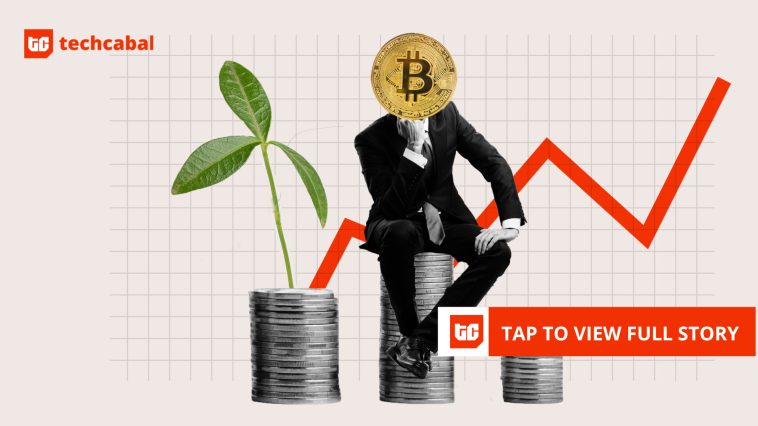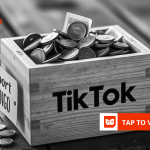Busha, a Nigerian cryptocurrency exchange that secured a provisional licence from the country’s Securities and Exchange Commission (SEC) in August 2024, has listed the compliant NGN (cNGN) on its platform. This marks the introduction of Nigeria’s first private consortium-backed stablecoin, pegged 1:1 to the Naira.
On February 3, Busha announced the stablecoin listing. Users can buy cNGN and sell it back to the platform, as Busha controls its own liquidity. However, users cannot send it to third-party wallets or decentralised exchanges yet, limiting its use cases since the stablecoin is still in the early stages of its rollout.
“We are excited to announce that cNGN (Compliant Nigerian Naira), the private-sector stablecoin poised to transform Nigeria’s digital economy, is now available on Busha,” the startup posted on the social media platform, X.
While the cNGN is not a government-led project, like the eNaira, which the Central Bank of Nigeria (CBN) launched in 2021, the stablecoin still owes its existence to the SEC, a government Commission which has been clear on its intention to regulate the Nigerian crypto sector. The SEC approved the stablecoin initiative as part of its sandbox Regulatory Incubatory (RI) programme in August 2024, granting an entity called “Wrapped CBDC Ltd,” an approval in principle. The Wrapped CBDC is a 2023-registered Nigerian business credited as a joint venture—along with Convexity—pushing the cNGN.
The SEC did not immediately respond to a request for comment.
The private consortium leading the cNGN stablecoin push includes banks, fintechs, and other blockchain advocacy and tech consulting firms like Convexity, Alpha Geek Technologies, Digital Currency Coalition, and Interstellar, all coming together under the African Stablecoin Consortium (ASC).
Although the stablecoin launched in 2025, the discussions around creating a stablecoin started three years ago for the sole purpose of giving the Naira a fighting chance against widely traded USD-pegged stablecoins like Tether ($USDT) and USD coin ($USDC). With wider adoption and wide usage among users, the cNGN would increase the demand for the local currency, helping it gain value in the forex market.
The stablecoin is built on the Bantu blockchain—a layer-1 network—and designed to operate across multiple protocols, including Binance Smart Chain, Base, Ethereum, Polygon, and Assetchain, according to Adedeji Owonibi, founder of Convexity.
The stablecoin is currently only fully integrated on Binance Smart Chain (BEP-20) and Base, a builder-friendly layer-2 blockchain. This allows users to transfer cNGN between wallets on the Base network. However, since the stablecoin is only accessible on Busha and not trading on-chain, this hinders widespread adoption.
Since its conception, the cNGN project has faced several challenges, marked by repeated delays in its launch, stalled partnership negotiations, and the need to align with SEC regulations to ensure progress with the coin rollout. In a January 8 press release, the ASC postponed the cNGN launch indefinitely, citing that it was “engaging with the appropriate regulatory bodies.” Due to that press release, it was surprising to see the stablecoin launch only a few weeks later.
The ASC did not immediately respond to a request for comment.
Several Convexity staff members with direct involvement in the cNGN project declined to comment.
While Nigerians can now purchase cNGN on Busha, Quidax, another crypto startup which secured a provisional licence in August 2024, has yet to list the stablecoin on its platform.
Quidax declined to comment.
Busha, on the other hand, claims that it listed the cNGN on its trading platform due to the compliant nature of the stablecoin—as part of the RI programme created by the SEC.
“The SEC made it clear that digital asset issuers and exchanges must operate within a structured regulatory framework, which cNGN adheres to,” Ngozi Okonye, Busha Marketing Manager said in an email to TechCabal. “We have maintained an open dialogue with regulators to ensure that our [cNGN] listing aligns with existing policies and broader financial system objectives.”
Busha follows an asset listing protocol before launching any token on its app. The project must have enough liquidity, must be compliant with juridical regulations that apply to it, and show proper documentation of how its project will work.
“Before listing cNGN, we conducted due diligence on its issuance model, compliance setup, and reserve management structure,” said Okonye.
Crypto startups that want to list the cNGN stablecoin can make API calls to get contract addresses, check balances, process transactions, and integrate cNGN payments within their platforms.
In terms of liquidity, the cNGN website states that there are only 4,400 coins in circulation, signifying a low supply pool that could affect trading. However, in an email to TechCabal, Busha claims that it maintains its own cNGN liquidity pool, giving it control over trading speed and order execution on its platform.
“Busha is able to mint and burn cNGN as needed. We maintain cNGN liquidity to meet customer needs and there are no limits to how much cNGN users can [buy or] sell back at a time, other than account limits for users which apply to verification levels,” said Okonye.
Although Busha declined to reveal how it manages its cNGN reserves. “Our internal reserve management processes are however confidential.”
The cNGN has many use cases. It is useful in remittance where its potential integration with multiple blockchain networks offers low-cost options that are cheaper than USDC or Tether. For example, sending $100 USDT from one wallet to another on a congested Ethereum (ERC-20) blockchain network costs at least $1. With cNGN, if you’re sending the equivalent ₦150,000, the fee is cheaper—about ₦150–₦500 (which is currently less than $1)—making this an attractive option.
While the stablecoin is expected to provide an alternative for holding the fiat Naira, adoption will depend on the awareness and education that is created around it, according to a Web3 policy consultant who asked not to be named.
Another setback for cNGN adoption is the weak fiat Naira reserves. The outlook for many Nigerians holding on to the stablecoin as a means of value is unlikely, given the inflation, currency instability, and low trust in the Naira.
“It could have been better timing if the cNGN launched years ago,” said the Web3 policy consultant.
Yet, the stablecoin’s prospects could improve significantly once it begins trading on-chain, as its private consortium backing makes this possible. On-chain trading could pave the way for major foreign crypto exchanges—including Binance, which previously delisted the Naira—to list the stablecoin. This would allow Nigerians to trade the stablecoin through peer-to-peer (P2P) platforms.
However, since the SEC closely monitors the project, the regulator will likely have the final say on which platforms can list the stablecoin. This cautious approach explains why only Busha is currently trading the stablecoin, as the SEC tries to minimise risks.





GIPHY App Key not set. Please check settings